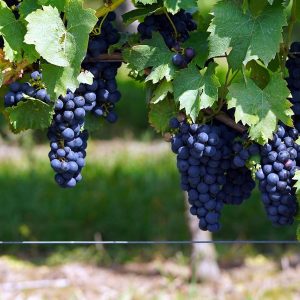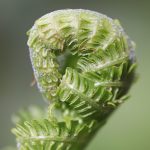THERMONEUTRAL MINDS: How Comfort Culture Is Making Us Fragile—And What Torah, Neuroscience, And Botany Teach About Resilience

Thermo-neutrality is the narrow temperature band—about 70 – 75 °F (21 – 24 °C)—within which the human body cruises without shivering or sweating. Our homes, offices, cars, even gyms now hold us there almost 24/7. Metabolically it feels luxurious; developmentally it’s disastrous. When we export that same “never-too-hot, never-too-cold” philosophy to conversation, education, and spirituality, we trade resilience for fragility.
From Climate Control to Culture Control
In the physical realm, endless 72 °F living leaves brown fat dormant, capillaries sluggish, and immune vigilance low. Psychologically we copy-paste the same template: curated social feeds, trigger warnings for ideas, air-conditioned debate. The modern reflex—“I’m offended”—functions like a circuit breaker: heat rises, lights go out, dialogue ends.
Neuroscientist Stephen Porges calls this hypersensitive attentiveness or scanning “neuroception.” When every unexpected opinion is mistaken for threat, the autonomic nervous system snaps from calm (ventral vagal – socially safe) into fight-or-flight or collapse. Dan Siegel labels the healthy range of arousal “the window of tolerance;” habitual avoidance shrinks that window until the slightest gust of disagreement feels like a hurricane.
Torah: Painstaking Effort, Proportionate Reward
Jewish wisdom insists that growth hides inside struggle. Pirkei Avot 5:23 famously states, “According to the pain is the reward.” Rabbi Schneur Zalman (Tanya, Iggeres HaKodesh 26) explains that every descent is engineered for a greater ascent. Lurianic Kabbalah’s birur ha-nitzutzos says divine sparks are liberated only by wrestling with difficult matter. The Lubavitcher Rebbe translated that into modern marching orders: the goal is not to flee exile but to illuminate it from within.
Hormesis: Stress That Heals
Biology echoes the sages. Mild, intermittent stress—hormesis—up-regulates longevity pathways and antioxidant defenses. Cold plunges trigger mitochondrial biogenesis; saunas induce heat-shock proteins; short fasts sharpen metabolic flexibility. Remove these micro-strains and systems atrophy: muscles waste, immunity dulls, mood disorders climb.
Plants Preach the Same Sermon
Consider plants that thrive in drought, rocky soil, scorching sun. Grapes grown on windswept hills, wild blueberries clinging to cliff-faces, shade-starved tea bushes in high mountains—all pump out polyphenols like resveratrol, anthocyanins, and catechins. These molecules are survival chemistry: UV shields, pest deterrents, antifungals. The harsher the habitat, the richer the phytochemistry—and the greater the benefit to the humans who ingest it. Pampered greenhouse produce, by contrast, often contains far less of these protective compounds.
A Possible Spiritual Corollary
Our spiritual “polyphenols” —empathy, courage, insight, fortitude —are usually synthesized in personal droughts and social storms, not in climate-controlled ease. Sometimes grappling with different ideas can give “hormetic benefit.”
REAL-LIFE RECALIBRATION
Physical Practices
- End your showers with 30 seconds of cold water for contrast.
- Alternate sauna or hot bath with a brief unheated walk.
- Spend ten minutes outdoors each morning before adjusting the thermostat.
Psychological Practices
- Read from an editorial, book, or article you strongly disagree with—instead of doom-scrolling—once a week.
- Host a “courageous conversation” dinner where the rule is curiosity before rebuttal.
- Replace “I’m offended” with “I’m interested—tell me more about how you see it.”
Spiritual Practices
- During prayer or meditation, deliberately notice and breathe through minor discomforts rather than shifting instantly.
- Study a Torah perspective that challenges your default stance and journal the tension points.
These micro-stresses widen both the literal and metaphorical window of tolerance. They reaffirm that heat and cold, dissent and doubt, are not threats to wholeness but pre-requisites for it.
Treasure in the Contrast
Muscles strengthen by lifting; vines sweeten by straining; souls deepen by wrestling. A life locked at 72 °F—physically or ideologically—may feel safe, but it quietly starves our systems of the very contrast that forges vitality. So, crack a window, listen to an opposing idea, let your heart race and your pores open. Remember the hardy grape: battered by wind, it yields the richest wine. And recall the Mishnah’s promise: reward is commensurate with painstaking effort.
Thermoneutral minds—like thermoneutral bodies—cannot sustain a vibrant world. Step into the chill, enter the heat, and illuminate exile from the inside out.
For a more extensive version of this article, please join my Substack column BY CLICKING HERE
CLICK HERE TO ENJOY MY SUNO SONG FOR “THERMONEUTRAL MINDS”
We love hearing from you, please feel free to leave your comments below.
With Gratitude,
Rus Devorah
REFERENCES:
Alter Rebbe. (n.d.). Iggeres HaKodesh, Epistle 26. In Tanya. Kehos Publication Society. https://www.chabad.org/library/tanya/tanya_cdo/aid/7971/jewish/Epistle‐26.htm
Avot, P. (n.d.). Pirkei Avot 5:23. In Mishnah.
Kingma, B., & van Marken Lichtenbelt, W. (2015). Energy consumption in buildings and female thermal demand. Nature Climate Change, 5, 1054–1056. https://doi.org/10.1038/nclimate2741
Luria, I. (16th century). Etz Chaim (teachings on birur ha-nitzotzot). Safed, Israel.
Matt, D. C. (Trans.). (2004). The Zohar: Pritzker Edition. Stanford University Press.
Mattson, M. P. (2008). Hormesis defined. Ageing Research Reviews, 7(1), 1–7. https://doi.org/10.1016/j.arr.2007.08.007
Porges, S. W. (2011). The Polyvagal Theory: Neurophysiological Foundations of Emotions, Attachment, Communication, and Self‐Regulation. W. W. Norton.
Rattan, S. I. S. (2008). Hormesis in ageing. Ageing Research Reviews, 7(1), 63–78. https://doi.org/10.1016/j.arr.2007.09.002
Schneerson, M. M. (Various years). Likkutei Sichos, letters, and talks. Kehot Publication Society.
Siegel, D. J. (1999). The Developing Mind: How Relationships and the Brain Interact to Shape Who We Are. Guilford Press.
Spencer, J. P. E., Abd El Mohsen, M. M., Minihane, A. M., & Mathers, J. C. (2008). Bioavailability of flavonoids and polyphenols and their impact on human health. Free Radical Biology and Medicine, 44(3), 377–383. https://doi.org/10.1016/j.freeradbiomed.2007.10.002


